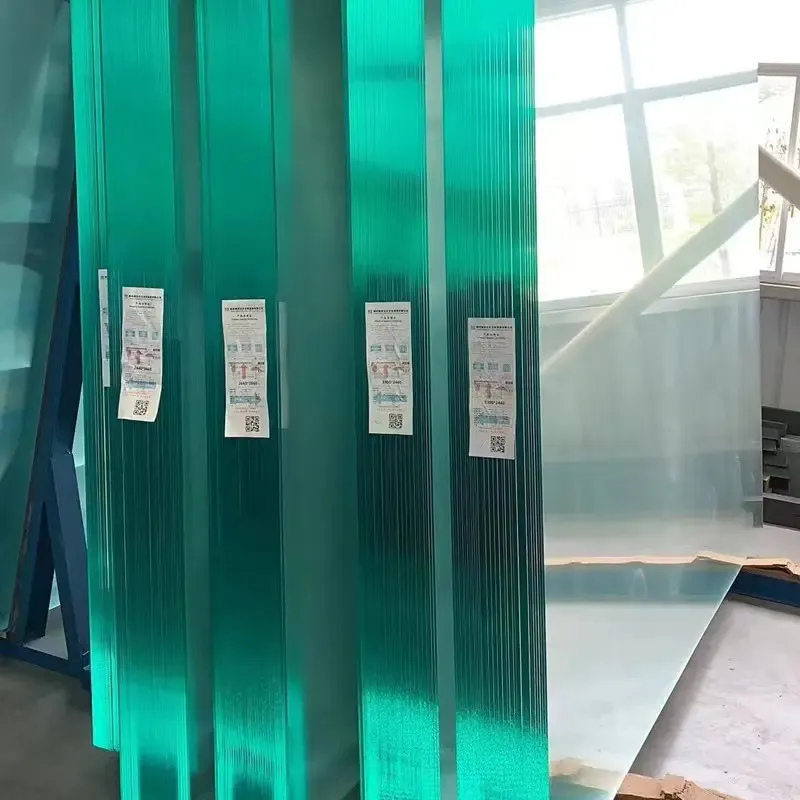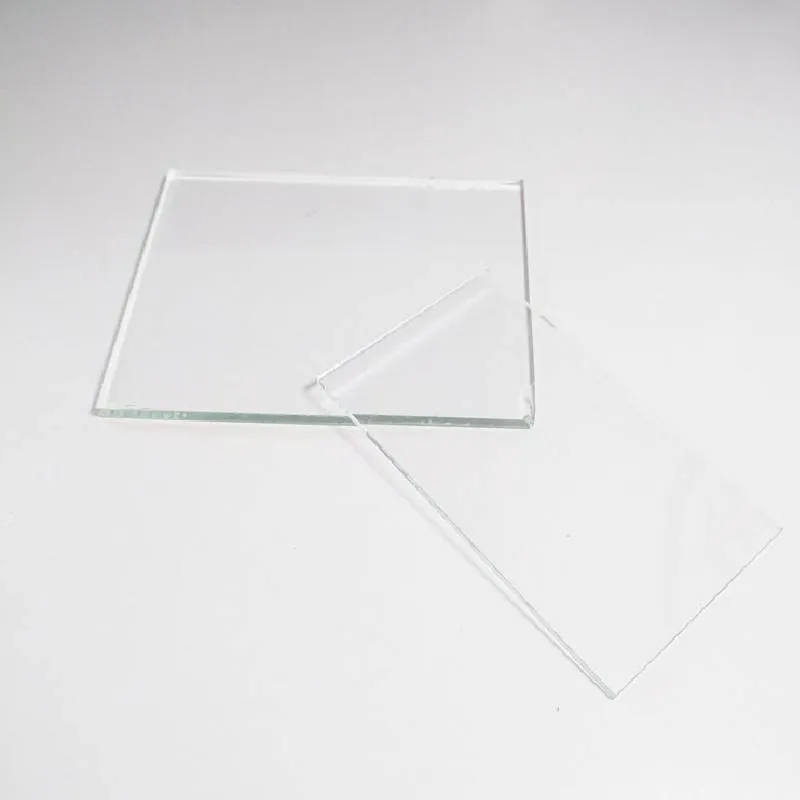- Introduction to What Does Low Iron Glass Mean and Core Related Terms
- Technical Advantages of Low Iron Glass Over Regular Glass
- Comparing Low Iron and Tempered Glass: Data and Manufacturer Insights
- Distinctive Appearance: What Does Rain Glass Look Like?
- Tailored Solutions: Custom Low Iron Glass Applications
- Real-World Use Cases: Successful Low Iron Glass Integration
- What Does Low Iron Glass Mean for Innovation in Modern Design?

(what does low iron glass mean)
Introduction to What Does Low Iron Glass Mean and Core Related Terms
Understanding what does low iron glass mean
is fundamental when considering glass selection for architectural, display, or decorative purposes. Low iron glass, also known as extra-clear glass, is distinct because it is manufactured with reduced iron content, allowing for greater light transmission and clarity compared to standard clear glass. This lower iron concentration prevents the typical greenish tint often present in conventional glass products. In contrast, tempered glass refers to glass that has undergone special heat-treatment to improve its strength and safety characteristics, while rain glass is a decorative glass product, noticeable by its textured surface mimicking falling rain. Understanding these key differences broadens the perspective when making informed decisions for glass usage.
Technical Advantages of Low Iron Glass Over Regular Glass
Low iron glass stands out not only aesthetically but also functionally. Its transmittance rate can reach up to 91-92%, compared to the typical 84-86% in standard float glass, creating a visibly clearer and brighter result. This property is invaluable in applications like solar panels, high-end architecture, retail displays, and aquariums. Furthermore, with iron content reduced to approximately 0.01-0.02%—compared to around 0.1% in standard glass—low iron glass eliminates unwanted coloration and ensures true-to-source color rendering. This clarity is especially critical in contemporary design trends prioritizing openness, natural lighting, and color accuracy. Beyond visual superiority, low iron glass can also be laminated, toughened, or coated just like conventional glass, maintaining safety and specialized performance.
Comparing Low Iron and Tempered Glass: Data and Manufacturer Insights
Evaluating the properties and offerings from top suppliers provides clear context for selecting the appropriate glass product. Below is a data-driven comparison table based on leading manufacturer specifications:
| Property / Attribute |
Low Iron Glass |
Tempered Glass |
Standard Clear Glass |
| Light Transmittance (%) |
91-92% |
84-90% (dependent on base glass) |
84-86% |
| Iron Content (%) |
0.01-0.02 |
0.1 (regular), 0.01-0.02 (when low iron base) |
0.1 |
| Color |
Ultra-clear, color-neutral |
Standard or ultra-clear (if low iron) |
Greenish tint present |
| Strength |
Dependent on processing |
4-5x stronger than annealed |
Standard |
| Available Thickness (mm) |
3-25 |
3-19 |
3-25 |
| Major Brands |
Guardian UltraClear, Saint-Gobain Diamant, Pilkington Optiwhite |
PPG, AGC, Saint-Gobain |
Generic float glass |
| Best Use Cases |
Facade, display, solar, aquarium |
Safety glazing, shower doors, partitions |
Windows, basic glazing |
It's vital to note that both low iron and tempered glass can be combined: when safety and clarity are needed simultaneously—such as in high-end storefronts—manufacturers offer low iron tempered glass. Industry leaders like Guardian, Saint-Gobain, and Pilkington set the global standards for low iron glass with highly consistent iron removal processes and rigorous quality control, ensuring every panel delivers optical precision.
Distinctive Appearance: What Does Rain Glass Look Like?
Rain glass differs substantially in both appearance and function from low iron glass. While low iron glass is prized for its clarity, rain glass features a visually textured pattern designed to resemble cascading water droplets or rainfall. This surface detail not only serves decorative purposes but also provides privacy by diffusing light and obscuring direct lines of sight. The orientation of rain glass—vertical versus horizontal—can alter its impact in interiors or exterior settings. Market data reveals that rain glass is most commonly used in bathroom enclosures, cabinet doors, and certain window applications, with its ability to scatter light effectively reducing glare and softening harsh sunlight. In design comparisons, rain glass typically transmits slightly less light, often in the 75-80% range, due to patterning, but delivers unrivaled ambiance in spaces where privacy and decorative style are desired.
Tailored Solutions: Custom Low Iron Glass Applications
Customization is a pivotal advantage of low iron glass. Architects and designers increasingly specify bespoke panel sizes, edge profiles, and coatings—including anti-reflective and solar control layers—to suit project needs. Manufacturers cater to a wide array of requirements:
- Thick, ultra-clear casings for aquarium panels, display cases, and luxury balustrades
- Oversized façade applications for modern skyscrapers and curtain walls
- Specialty lamination for sound reduction and safety in high-traffic environments
- Precision-cut or shaped components for museum or retail presentations requiring distortion-free transparency
Industry estimates indicate a
20% annual growth in demand for tailored low iron glass projects in premium commercial and residential markets. This surge is fueled by clients seeking differentiation through maximized daylighting and elegant, color-true visual connections to outdoors. From digitally printed graphics to switchable privacy technologies embedded in low iron panels, customization is limited mainly by imagination and logistics, not material constraints.
Real-World Use Cases: Successful Low Iron Glass Integration
Examining practical examples illustrates the full spectrum of low iron glass utility. Consider the Apple Park Visitor Center in Cupertino, which employs expansive low iron glass walls to achieve seamless indoor-outdoor transitions, supporting the brand’s minimalist architectural ethos. Similarly, the Dubai Frame's observation decks maximize skyline views with low iron glass, enabling clear vistas even in challenging sunlight. On a smaller scale, luxury jewelry retailers use low iron display cases to eliminate color distortion, crucial for the accurate presentation of gemstones. In art galleries and museums, preserving faithful art representation—and protecting against UV degradation—is possible due to specialized low iron glass with added protective coatings. These projects highlight not just aesthetic but commercial and functional gains: increased traffic, longer dwell times, and a measurable lift in perceived space value—sometimes as much as 15-25% higher than conventional builds.
What Does Low Iron Glass Mean for Innovation in Modern Design?
The question of what does low iron glass mean for modern development extends far beyond mere material specification. In a world driven by technological advancement and evolving aesthetic standards, low iron glass enables design possibilities that spark innovation. Data shows that projects incorporating low iron glass—either alone or in combination with technologies like double-glazing or photovoltaic layers—outperform traditional builds in both energy efficiency and occupant satisfaction. The transparency and purity of low iron glass foster a unique connection to the outside world, fulfilling human-centric design objectives while supporting sustainable urban environments. As glass manufacturing continues to evolve, expect further enhancements in clarity, strength, and customization, helping shape iconic, enduring spaces in architecture, retail, and beyond.

(what does low iron glass mean)
FAQS on what does low iron glass mean
Q: What does low iron glass mean?
A: Low iron glass is a type of glass that has reduced iron content compared to standard glass, resulting in higher clarity and less greenish tint. It is commonly used in applications requiring maximum transparency and color accuracy.
Q: Why choose low iron glass over regular glass?
A: Low iron glass is chosen for its enhanced clarity and true color representation, making it ideal for displays, shower enclosures, and architectural features. Unlike regular glass, it does not give off a noticeable green hue.
Q: Tempered glass—what does it mean?
A: Tempered glass is specially heat-treated to increase its strength and safety. When broken, it shatters into small, blunt pieces rather than sharp shards, reducing injury risk.
Q: What does rain glass look like?
A: Rain glass features a textured surface that mimics the appearance of falling rain. It provides privacy while still allowing light to pass through and is often used in shower doors and windows.
Q: Can low iron glass be tempered for safety?
A: Yes, low iron glass can undergo the tempering process just like regular glass. This makes it both highly transparent and safe for use in demanding settings such as doors and facades.
 Afrikaans
Afrikaans  Albanian
Albanian  Amharic
Amharic  Arabic
Arabic  Armenian
Armenian  Azerbaijani
Azerbaijani  Basque
Basque  Belarusian
Belarusian  Bengali
Bengali  Bosnian
Bosnian  Bulgarian
Bulgarian  Catalan
Catalan  Cebuano
Cebuano  Corsican
Corsican  Croatian
Croatian  Czech
Czech  Danish
Danish  Dutch
Dutch  English
English  Esperanto
Esperanto  Estonian
Estonian  Finnish
Finnish  French
French  Frisian
Frisian  Galician
Galician  Georgian
Georgian  German
German  Greek
Greek  Gujarati
Gujarati  Haitian Creole
Haitian Creole  hausa
hausa  hawaiian
hawaiian  Hebrew
Hebrew  Hindi
Hindi  Miao
Miao  Hungarian
Hungarian  Icelandic
Icelandic  igbo
igbo  Indonesian
Indonesian  irish
irish  Italian
Italian  Japanese
Japanese  Javanese
Javanese  Kannada
Kannada  kazakh
kazakh  Khmer
Khmer  Rwandese
Rwandese  Korean
Korean  Kurdish
Kurdish  Kyrgyz
Kyrgyz  Lao
Lao  Latin
Latin  Latvian
Latvian  Lithuanian
Lithuanian  Luxembourgish
Luxembourgish  Macedonian
Macedonian  Malgashi
Malgashi  Malay
Malay  Malayalam
Malayalam  Maltese
Maltese  Maori
Maori  Marathi
Marathi  Mongolian
Mongolian  Myanmar
Myanmar  Nepali
Nepali  Norwegian
Norwegian  Norwegian
Norwegian  Occitan
Occitan  Pashto
Pashto  Persian
Persian  Polish
Polish  Portuguese
Portuguese  Punjabi
Punjabi  Romanian
Romanian  Russian
Russian  Samoan
Samoan  Scottish Gaelic
Scottish Gaelic  Serbian
Serbian  Sesotho
Sesotho  Shona
Shona  Sindhi
Sindhi  Sinhala
Sinhala  Slovak
Slovak  Slovenian
Slovenian  Somali
Somali  Spanish
Spanish  Sundanese
Sundanese  Swahili
Swahili  Swedish
Swedish  Tagalog
Tagalog  Tajik
Tajik  Tamil
Tamil  Tatar
Tatar  Telugu
Telugu  Thai
Thai  Turkish
Turkish  Turkmen
Turkmen  Ukrainian
Ukrainian  Urdu
Urdu  Uighur
Uighur  Uzbek
Uzbek  Vietnamese
Vietnamese  Welsh
Welsh  Bantu
Bantu  Yiddish
Yiddish  Yoruba
Yoruba  Zulu
Zulu 


